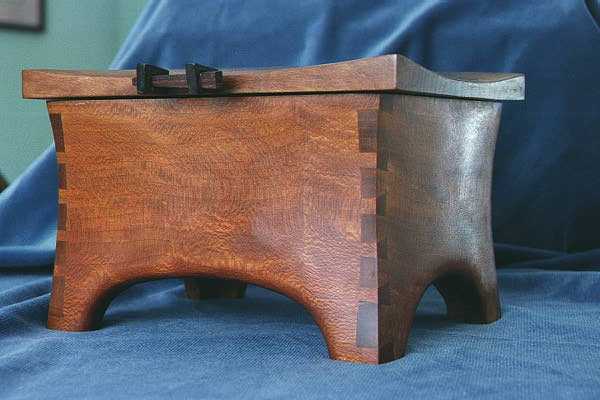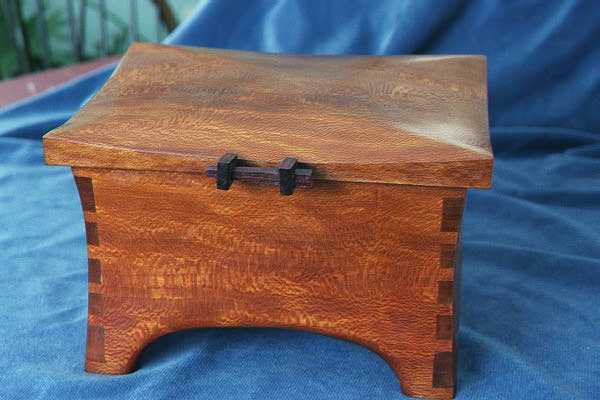
Sycamore is an interesting wood. If it's sawn in the way known as "flatsawn" it's a rather dull wood. (Flatsawn wood is wood in which the board faces are cut perpendicular to the radial direction of the tree trunk). If sycamore is "quartersawn" it displays beautiful figure. In quartersawn wood the board faces are cut parallel to the radius of the tree trunk. In some woods: sycamore, oak, leopardwood, and lacewood to name a few, quartersawing exposes the prominent medullary rays in the wood and leads to a stunning figure.
There are many large sycamore trees in this area (central NJ) and it hurts me to see them cut down to make room for housing developments and roadways. Often the wood from these trees ends up as firewood or mulch. A friend of mine invested in a portable saw mill and he's been active in sawing wood so that it can be used for woodworking. The quartersawn sycamore in this piece grew locally and was cut to maximize the figure of the wood.
Another feature of sycamore that makes it less desirable as a furniture wood is that it is very unstable while drying. Flat green boards twist and warp horrifically while drying, so that it's a challenge to get wide flat boards for projects.

The sculpted style of this piece is one that I've been using for a few years now. It's become a little bit of an obsession as I refine the look and the techniques for producing this style. It's a good thing that people seem to like the style as well.

One of the things I try to do is to vary the spacing and size of the dovetails to match the final thickness of the wood after I get done curving the sides. The widest dovetails are at the top and bottom where the wood is thickest. The spacing of the dovetails on this box is pretty uniform, but I often paly around with it as a design element, perhaps making the dovetails closer together at the top and bottom than they are at the center.
There are some woodworkers who favor wide dovetails with very narrow spacing (pins). This has never appealed to me.

This is another box with an unusual handle. It consists of two mortised cocobolo pieces that are pegged into the box top with a wedge between them.
This piece is one where I experimented with an aniline dye stain to bring out the figure, followed by a coat of tung oil for "depth" and multiple top coats of French polished shellac. I wasn't entirely happy with the finish - the stain didn't do all that much for the figure and I think I prefer the natural sycamore color over the darker stained color.
This page hosted by Geocities Get Your FREE
Homepage!